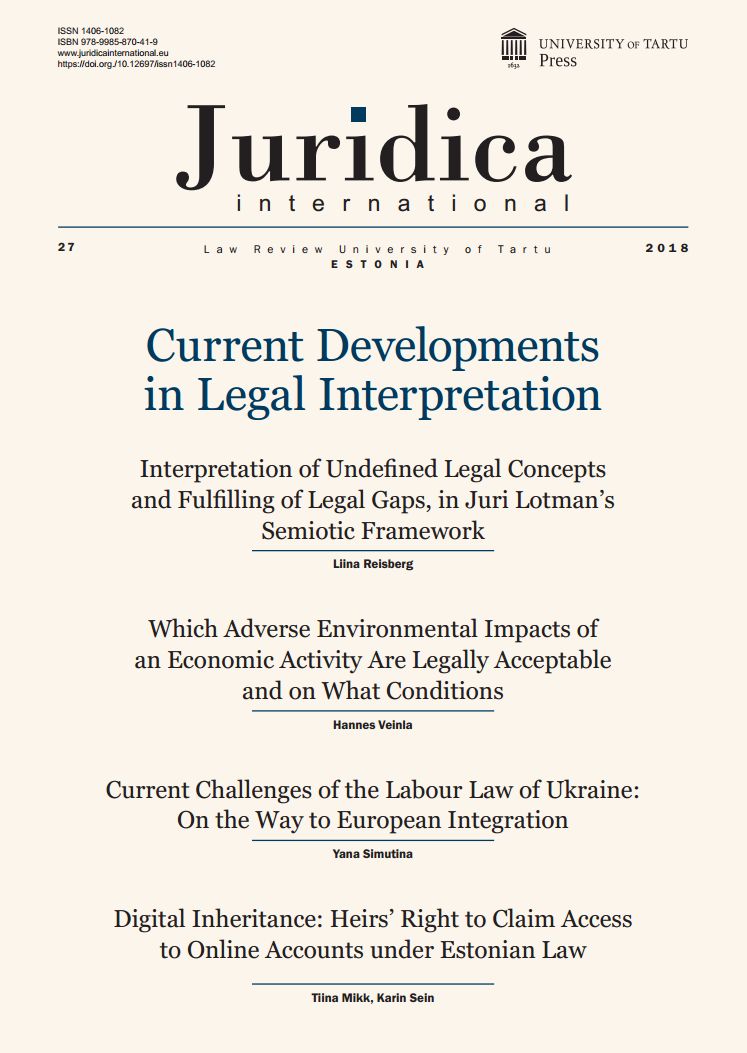Towards a Single Government Approach via Further Consolidation of Law and Order in Estonia, with Domestic Violence as an Example
DOI:
https://doi.org/10.12697/JI.2018.27.11Keywords:
preventing domestic violence, combating domestic violence, sociology of law, criminal policy, criminal law and procedure, legislative consolidationAbstract
An appropriate ‘solution pattern’ for social problems in a state based on the rule of law entails the existence of corresponding legislative regulations. The solution should be approved at the level of a law as a legislative act of supreme juridical power. A solution created at that level would fully correspond to the principle of rule of law and also minimise the possibility of socalled departmental special interests prevailing, in recognition that this danger accompanies efforts toward the solution of every multifaceted problem. The authors find that, since Estonia already possesses relatively extensive experience in legislative consolidation for various aspects of the society’s reality, with most of this experience being of a positive nature, it would be a most welcome development if the issue of DV were to be included in the current process of consolidation under the auspices of the project Towards the Development of Better Legislation.
Legislative drafting is stimulated by the perception of acute social problems and of a need to regulate them by legislative means. Results from 2014 and 2017 surveys show that Estonia’s legal practitioners perceive DV as a problem the causes of which demand research and whose victims require help. Most legal practitioners surveyed encountered DV in their day-to-day work, with prosecutors and police detectives bearing the heaviest burden: it consumed nearly one third of their work hours. A serious problem was identified in prejudice and stereotypes, which yield an oversimplified and distorted image of the actual causes of DV, in which the victim frequently is considered responsible. Both the general population and legal practitioners widely share the erroneous impression that the victims could avoid violence through ‘appropriate conduct’. Such stereotypic attitudes wherein victims are considered partially to blame for violence can obstruct the work of law-enforcement agencies.
While the idea of a special law on DV found support and scepticism in roughly equal measure, support for it increased significantly when respondents judged the concrete opportunities and solutions offered by such a law. These legal practitioners perceived numerous bottlenecks and unsolved problems in relation to the existing legislative regulation and legal practice, which one would expect to be overcome through a special law on DV. The authors conclude from the survey-based findings that Estonia’s legal practitioners demonstrate considerable anticipation for a law on DV. The participants in the surveys also perceived an increasing need for co-operation with law-enforcement agencies in this regard – i.e., for concentrating on collaboration within this domain. However, the authors consider it undoubtedly important also to increase the involvement of specialists in the DV field: victim support services, staff of women’s shelters, and municipal social workers.


